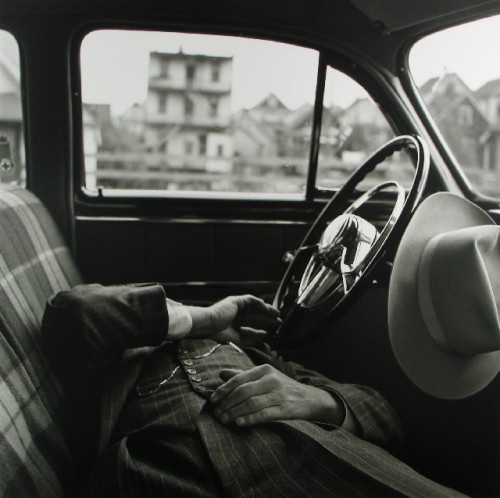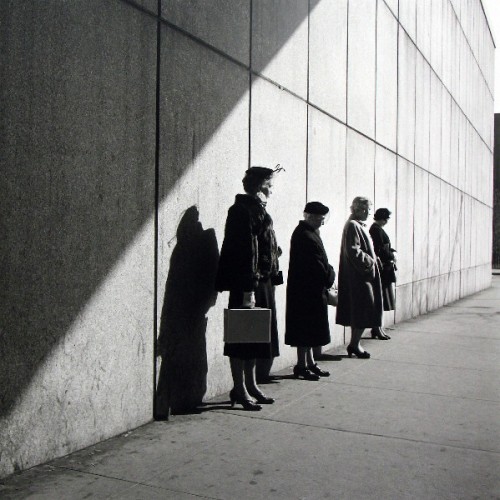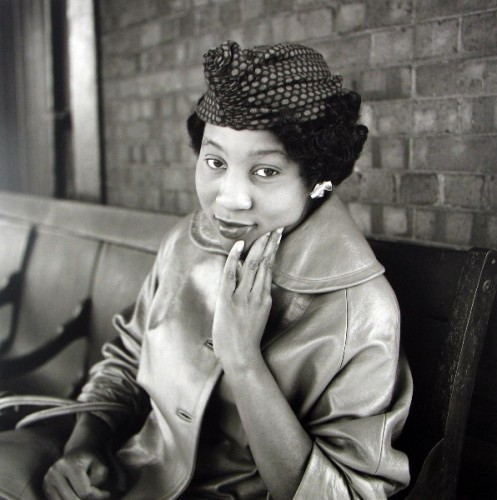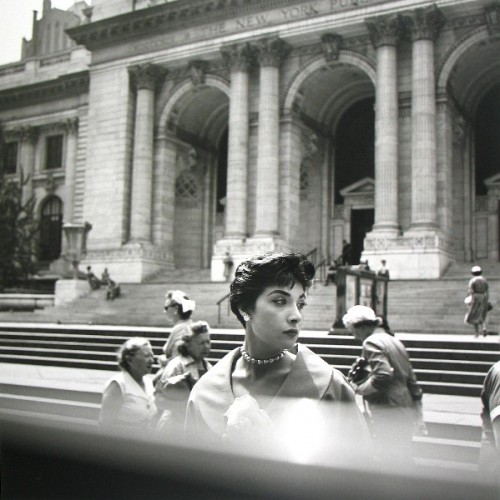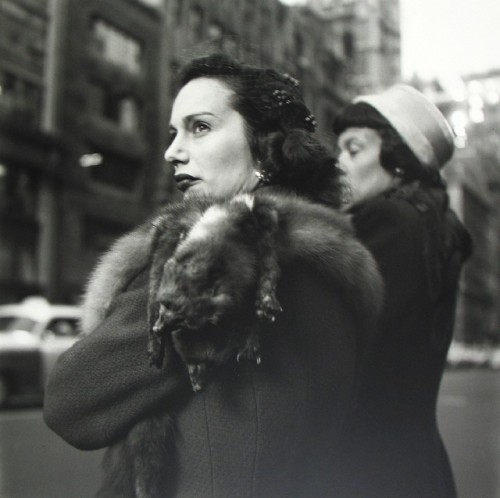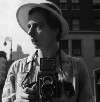Vivian Maier Photographer at Greenberg Gallery
Billing as a Nanny Photographer Is Inappropriate
By: Susan Hall - Dec 17, 2011
Vivian Maier
Howard Greenberg Gallery, New York
Vivian Maier whose work is on display at the Howard Greenberg Gallery in New York has become a media darling as the Nanny Photographer or the Mary Poppins of Street Photography. It is true that Maier earned her living as a nanny and that she was a street photographer. While she clearly loved children and was very handy with them. Her day job did not define her as a person. She was a photographer.
John Maloof, a Chicago real estate broker who found her undeveloped film in storage boxes, has been busy developing and scanning the images. That he arranged for Howard Greenberg to mount the first New York exhibit of the work is a measure of the sensitivity Maloof brings to his mission to present Maier’s work in the light of day.
Joel Meyerowitz, a consummate street photographer himself, wrote the classic text on the subject, Bystander. He has anointed Maier as a member of the tribe by including a chapter on her work in the next edition of this book. She certainly worked in a world circumscribed by Walker Evans' famous admonition: “Stare. It is the way to educate your eye and more. Stare, pry, listen, eavesdrop. Die knowing something. You are not here long.” Maier stares to perfection.
When Meyerowitz first saw the work, he assumed the photographer was a man, the images were so gritty and tough. No stronger endorsement can be imagined than that of Meyerowitz, who sees poetry in her photo of daisies popping up from the back seat of a convertible and humor as a man puts up a billboard of a reclining woman and seems to kiss her.
Maier did have a long life and photographed extensively. She traveled around the world, but her work during this trip, and, in fact most of her work, has not yet been released.
As to her heritage, an interesting origin thought arises because she and her mother lived with Boston Globe photographer Jeanne Bertrand. Maloof also suggests that she may have studied with one of photography’s early stars, Lisette Model. Maier had about 3000 books stored at the time of her death. Maloof reports that many of them were art books, and cites Atget and Evans as titles. He has not cracked them open to see if there are notes or tabs. When he does, we may glean the deepest insights about her photographer progenitors and her ideas about style and form.
In the exhibit at Greenberg, some of the best photographs suggest Irving Penn, Evans and Meyerowitz. Maier shot principally with a Rolleiflex into whose frame you have to look down. Many photographers like to have the camera at the eye, protecting them from their subjects, making them anonymous and allowing them to invade another human without feeling vulnerable themselves. While Maloof reports that Maier later shot with a Leica, favored by Cartier Bresson among many others, for a long time Maier did not need this protective armor.
Some have said that working in other people’s homes and photographing as an anonymous street artist allowed Maier to keep her privacy. Maier worked for fifteen years for one family. They provided a darkroom. The mother of the household was a sculptor. The boys cared about Maier as she aged. Maloof has revealed photographs of both the darkroom and the room Maier used in the household. If you have seen the wonderful film on street photographer Bill Cunningham, you will know what these rooms look like. Every inch of space is filled with what looks like crap to us, but with what are treasures to the occupant. So far, we have only Maloof's report that the family had no idea she was taking pictures. I believe there is no way that they didn't take a peek in these rooms. What did they make of Maier? They only thought of her as a beloved, eccentric nanny?
Maier's desire for privacy is not to be compared to that of painter Clyfford Still, who had a major career and left for a Maryland farm to paint away from the New York art world, MOMA and the critics he despised. That now rare impulse to create far from the madding crowd is understandable. While few may decide to give up money and fame when it is offered, some have the guts to do this.
Maier was a photographer by any standard. She didn’t need to spread the news while she lived. Instead she worked and worked and worked. Meyerowitz says, “She was out on the rough streets, walking around the seedy part of town…She was incredibly bold as a woman and vulnerable at the same time in a period when women weren’t necessarily thought of that way.”
John Maloof, into whose hands and attic she has fallen, makes the argument that "every photograph in this exhibit is strong." Photographs can be judged by commonly accepted standards. In street photography, which is a fleeting moment captured, the eye and the soul of the snapper is determinative. How else do we split off in our mind’s eye the photographs taken by 10,000 people walking The High Line on any given day from those of great photographers? A great street photographer may not intend a shot, but does bring to the shot a specially gifted eye and heart.
That Vivian Maier is great is displayed in a few of these photographs that have been made public. There are tens of thousands more. With Howard Greenberg’s direction, editing and curation, everything that should happen to Maier’s work can come to pass. Greenberg is a remarkable gallery owner and presents in a way that always provides his collectors with an in- depth and accurate appreciation of the photographs.
The Maier photographs are a revelation. Imagine Greenberg editing the remaining 100,000 unseen photographs; Is there a book or a future collection that finally unravels the essential Maier mystery?

